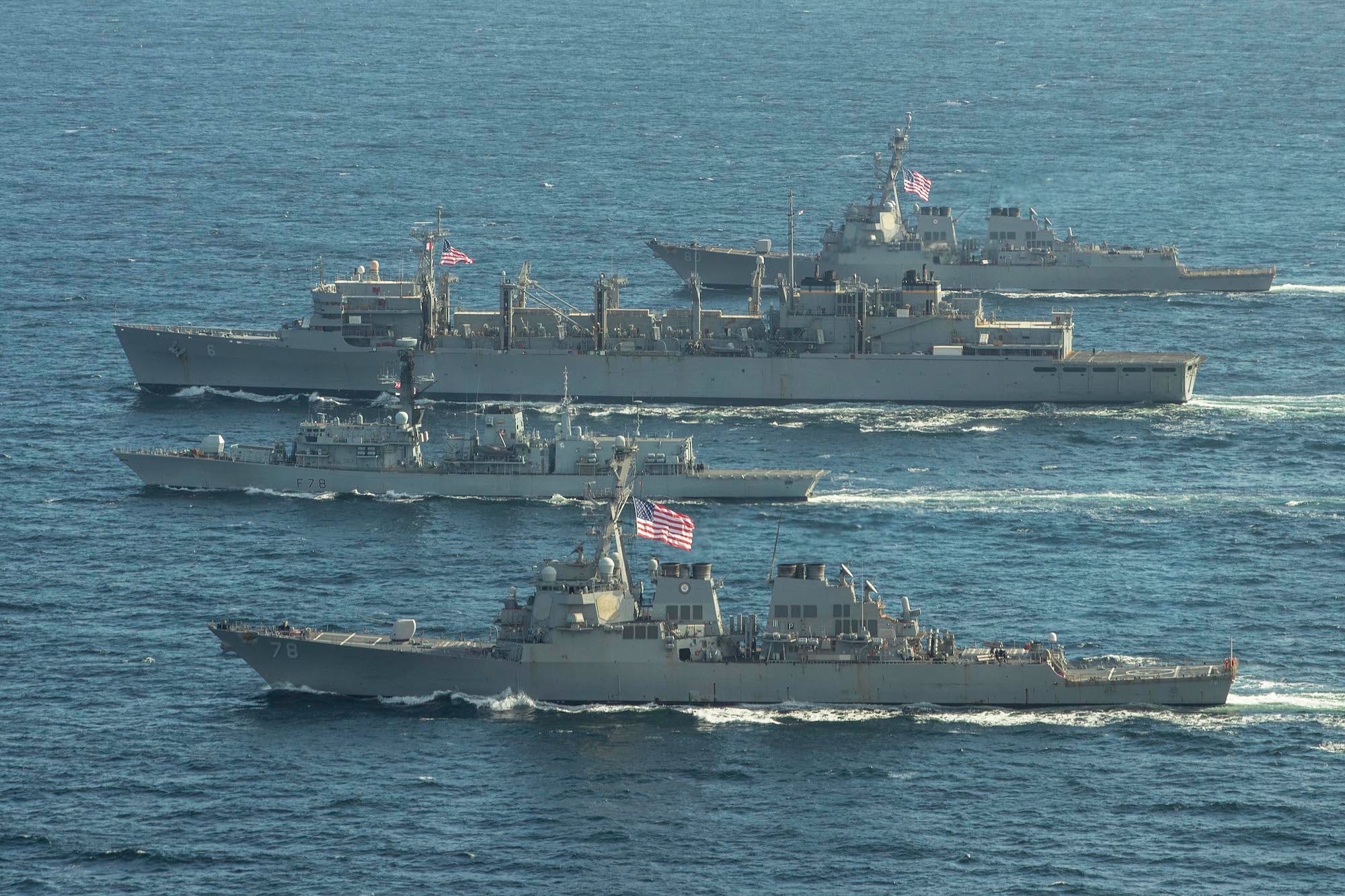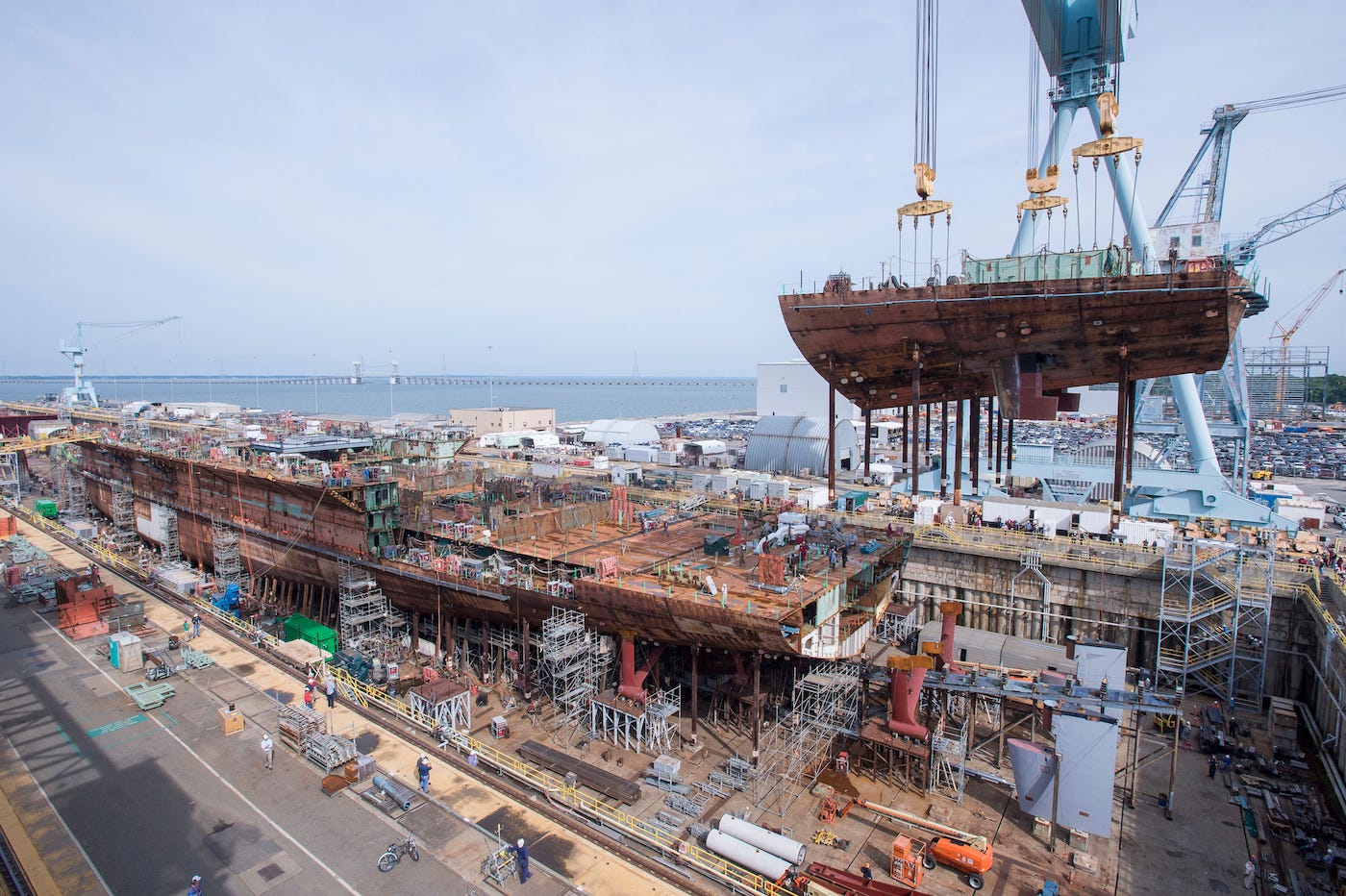
US Navy/Mass Comm. Specialist 3rd Class Joseph A.D. Phillips
- The warming Arctic is becoming a growing area of operation for the Navy.
- The need for more presence in the Arctic comes as the Navy also refocuses on countering China and Russia.
- Rep. Elaine Luria, vice chair of the House Armed Services Committee, worries the Navy doesn't have the right plan to meet those challenges.
- See more stories on Insider's business page.
As Defense Secretary Lloyd Austin reviews the US military's footprint across the globe, one top lawmaker is questioning whether a new combatant commander is needed to meet growing threats from Russia and China in the increasingly accessible Arctic.
Three US combatant commands – Northern Command, European Command, and Indo-Pacific Command – converge in the Arctic. Each command has assigned forces, but those forces are very different.
Indo-Pacific Command has more than 100 naval vessels to operate around the Pacific Ocean, but US European Command has only a handful of guided-missile destroyers, which mostly focus on the Mediterranean. Northern Command has no assigned naval forces for its area of responsibility off the US coasts.
At two recent House Armed Services Committee hearings, Rep. Elaine Luria, a Virginia Beach Democrat and vice chair of the committee, pressed Air Force Gen. Glen VanHerck and Air Force Gen. Tod Wolters- leaders of Northern Command and European Command, respectively-about whether they have enough forces and the right operational structure to address the challenges in their regions.
Neither VanHerck nor Wolters said there were any problems, and Luria, a retired Navy commander, told Insider in an interview that she doesn't see any lack of leadership.
However, the complexities of that huge geographic region and the competing interests there could require a new approach, such as assigning forces specifically to the Arctic.
"It happened over time that the map has shifted as far as where the combatant commanders' geographic areas are," Luria said. "Should there be a single combatant commander with forces assigned to the Arctic? It's a question I was trying to kind of go after from the combatant commanders."
Same forces, more demand

Royal Navy/LPhot Dan Rosenbaum
The Arctic and North Atlantic have become a focal point in recent years with increased activity in the region from Russia and China.
The Navy in summer 2018 reactivated its 2nd Fleet to reassert itself in the region. Soon after, the USS Harry S. Truman became the first US aircraft carrier to operate in the Arctic in nearly three decades. The Navy's presence there has only increased since then.
The Unified Command Plan, which lays out the organizational structure for the combatant commands, was last updated a decade ago with regard to the Arctic, and that region is now "the ultimate unfunded mandate," said Heather Conley, who directs the Europe, Russia, and Eurasia program at the Center for Strategic and International Studies, referring to military programs seen as needed but not included in its budget.
Those three combatant commands have their hands full - Northern Command with defense of the US, Indo-Pacific Command in the South China Sea, and European Command with its busy southern flank - Conley told Insider.
A subregional commander who can develop and advocate a coherent strategy for the Arctic is necessary, Conley said.
"You just don't have anyone who wakes every day at a senior level thinking about the Arctic," she said in an interview. "You have Congress ... pushing the administration constantly, militarily, to think about this."
That increased thinking is reflected in the Arctic-specific strategies released by the Pentagon and service branches - seven of them between 2019 and 2021 alone, Conley said.
"I've never seen such an amazing array of military strategies," Conley told Insider.
Luria cautioned that great-power competition with Russia and China could increase the demand on the Navy around the globe, stretching it even thinner as it continues with other missions, such as the withdrawal from Afghanistan and efforts to counter Iran.
"As soon as we started to implement the withdrawal from Afghanistan, one of the very first questions that was asked was, 'Where's the aircraft carrier?'" Luria told Insider. "Like, we need an aircraft carrier to support this withdrawal. If we don't have land forces in the region, is that going to create even more of a demand on naval forces?"
'Raising the alarm flag'

US Navy
The global posture review announced in February is meant to help reprioritize how the military uses its forces and resources.
Its results aren't expected until later this year, but Luria said the Navy needs to lean on allies while boosting its own presence in the Pacific and gaining proficiency in the North Atlantic and Arctic.
"If you ask am I satisfied with what our presence is in any [area of responsibility], my answer is going to be 'No,' because I think we need to grow the Navy and we need more forces and we need to deploy forward more," Luria said.
Growing the Navy will require building more ships at a faster pace - even as the service struggles to maintain the fleet it has.
Continuous maintenance delays and operational problems that have plagued the Littoral Combat Ship program, the Zumwalt-class guided-missile destroyers, and the new Ford-class aircraft carriers - which has been the focus of Luria's ire - only compound the Navy's challenge.
"Each one of those failures falls on the backs of the sailors on the ships that are deployable, right? So we see these double deployments of carrier strike groups and other ships, you know, really lengthy deployments," Luria said. "So we need to build more, we need to operate and maintain more efficiently, and we need to stop decommissioning ships faster than we can build them."
Luria has said she won't support the Navy's "divest-to-invest" strategy, which would decommission several ships to free up money for other assets, such as unmanned vessels, to prepare for a potential fight with China that could be decades away - a plan called Battle Force 2045.
Instead, Luria supports "modest investments" in research and development for new technologies alongside smaller investments in upgrading cruisers rather than scuttling them early, as the Navy wants to do.
While planning for the future is necessary, Luria said divesting ships now ignores immediate needs. The situation with China "really keeps me up at night," she said.
"It's not just the Navy, but as a country I think that we need to be focusing a lot more on that issue and the existential threat that we have from China," Luria said, citing Beijing's growing economic influence and the expansion of its military, particularly its navy.
Rather than settle for what it's being given, the US Navy needs to make the case to Congress for what it needs to meet those threats, Luria told Insider.
"One of my biggest takeaways is I don't feel like the Navy is sort of raising the alarm flag enough," Luria said.
